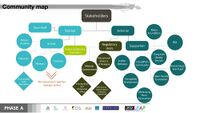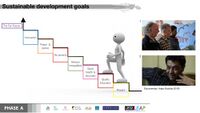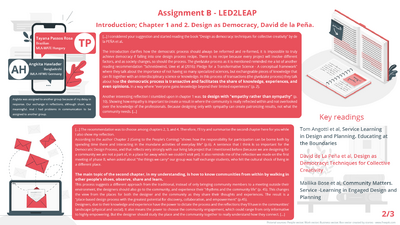LED2LEAP 2021 - Budapest Team: Difference between revisions
| Line 102: | Line 102: | ||
File:AssignmentBLADLED2LEAPTayana2021-01.png | File:AssignmentBLADLED2LEAPTayana2021-01.png | ||
File:AssignmentBLADLED2LEAPTayana2021-02.png | File:AssignmentBLADLED2LEAPTayana2021-02.png | ||
File:AssignmentBLADLED2LEAPTayana2021- | File:AssignmentBLADLED2LEAPTayana2021-033.jpg | ||
</gallery> | </gallery> | ||
Angkita and I exchanged some emails regarding the readings. It was a pity that, because I couldn't reply during a period, I lost the opportunity to continue exchanging emails with her for this Assignment. Some communication problems occurred and I couldn't be assigned to another partner. But even though the exchange with Angkita was short, it was fruitful and I'll share here some of it and some of my own. | Angkita and I exchanged some emails regarding the readings. It was a pity that, because I couldn't reply during a period, I lost the opportunity to continue exchanging emails with her for this Assignment. Some communication problems occurred and I couldn't be assigned to another partner. But even though the exchange with Angkita was short, it was fruitful and I'll share here some of it and some of my own. | ||
Revision as of 18:45, 31 May 2021
>>>back to working groups overview
For help with editing this Wiki page use this link.
For assignments and key readings use this link.
Landscape Democracy Rationale
- Dr. Ambedkar School is a Buddhist school with a focus on working with the Roma community. The school is located in the city of Miskolc, the city is known as an industrial town and has a very diverse townscape with many industries and housing estates, but it is mostly residential in the School surroundings. Also known as the second chance school, it is a secondary school where the students are encouraged to improve their quality of life through better education, to be able to reach the formal job market, and have a stable job with a fair wage.
- The school was moved to its location in Miskolcs in 2019 before it was located in a Roma settlement called Sájokaza to the north of Miskolc. The Roma community faces many landscape and social challenges in their settlements due to their very poor conditions. One of the main challenges is the segregation from the Roma community to the Hungarian community. Being usually placed in enclosed housing blocks or distant settlements, where the health conditions, education, and job opportunities are very poor.
- Besides keeping the students engaged, the challenges the school faces include the contrast in the landscape between the Roma settlements and the City of Miskolc, and also the school structure which is not adapted to be a school and lacks leisure areas.
Location and Scope
- Location of Dr. Ambedkar School.
The school is located in Miskolc, in the Northern region of Hungary. This is one of the poorest regions in the country, and many Roma settlements are located here. Although the city of Miskolc is the 4th biggest in Hungary, the Roma settlements around it are small, mostly ruined in structure and their residents are very poor.
Phase A: Mapping Your Community
Welcome to Your Community and Their Landscape
- The Roma community from Miskolc's surroundings and the Dr. Ambedkar School
Groups of Actors and Stakeholders in Your Community
- Relationships of Miskolc's community and the School's Community
Relationships Between Your Actors and Groups
- Power map of the community
Summary of Your Learnings from the Transnational Discussion Panel
Theory Reflection
- What are the next steps?
Reflection over the working methodologies.
References
- Ludwig, S. (Director). (2016). Angry Buddha [Documentary film].
- http://www.ambedkar.hu/
- https://www.hellomiskolc.hu/
- https://www.ksh.hu/regionalatlas_regions
- Shelley Egoz, Jala Makhzoumi and Gloria Pungetti (2011): The Right to Landscape: An Introduction
- Arnstein, Sherry R.(1969): A Ladder of Citizen Participation
Phase B: Democratic Landscape Analysis and Assessment
Tayana Passos Rosa and Angkita Hawlader Correspondence
Angkita and I exchanged some emails regarding the readings. It was a pity that, because I couldn't reply during a period, I lost the opportunity to continue exchanging emails with her for this Assignment. Some communication problems occurred and I couldn't be assigned to another partner. But even though the exchange with Angkita was short, it was fruitful and I'll share here some of it and some of my own. Highlighting here, I'll add some of my thoughts related to the reading and our Living Lab in Budapest. My overall reflection from the readings is that if you want to design for a community you need to first truly understand it. All knowledge is valuable, from the community experience in their everyday life, their culture, until the most specialized scientific knowledge from the professionals assigned to work in the area. And this exchange is beneficial to all because everyone learns something during this process, and every opinion weights the same. My favorite quote from all the readings is: "design with empathy rather than sympathy" (de la Pena et al. p. 10). I think this fits so well in our Budapest Living Lab situation. We are working with Dr. Ambedkar School, a Buddhist school mostly for the Roma community in Northern Hungary. The community faces a low education rate, poverty, lack of career opportunities, among many other challenges, all caused by segregation and prejudice. The school methodology tries to give the students another light on possibilities for the future through studies. I think the second chapter from de la Peña has very valuable tools to try and apply in this project, to go beyond the research of the community in a virtual environment, but also visit them in real life, experience their landscape, but especially see through their eyes and try and combine all our pieces of knowledge to achieve the best solution possible.
Your Name and Partner's Name Correspondence
- ''insert text here''
Your Name and Partner's Name Correspondence
- ''insert text here''
Your Name and Partner's Name Correspondence
- ''insert text here''
Your Name and Partner's Name Correspondence
- ''insert text here''
Phase C: Collaborative Visioning and Goal Setting
The Scene in Your Story of Visioning
- insert text here
The Actors in Your Story of Visioning
- insert text here
The Story of Visioning
- insert text here
Reflect on Your Story of Visioning
- insert text here
Phase D: Collaborative Design, Transformation and Planning
Your Prototyping Action
- insert text here
The Evolution of Your Prototyping Action
- insert text here
The Plan Behind Your Prototyping Action
- insert text here
The Realization of Your Prototyping Action
- insert text here
Reflect on Your Prototyping Action
- insert text here
Phase E: Collaborative Evaluation and Future Agendas
Collaborative Evaluation and Landscape Democracy Reflection
- insert text here
The Actors in your Collaborative Evaluation
- insert text here
Reflection on the Online Seminar
- insert text here
Reflection on the Living Lab Process
- insert text here
Your Living Lab Code of Conduct
- insert text here
Process Reflection
- insert text here


























